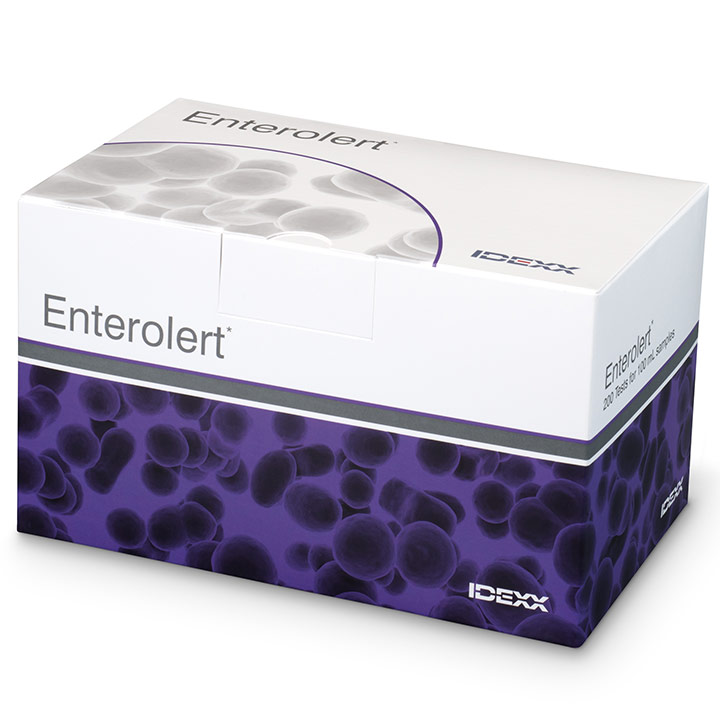
Enterolert
24-hour detection of enterococci
![]()
![]()
![]()
![]()
![]()
- Accurate results overnight so you can act quickly to protect the public and public resources.
- Discover enterococci contamination in half the time of standard methods.
- Eliminate tedious membrane filtration work.
Overview
Easy
- No media preparation.
- No autoclaving.
- No colony counting.
- No glassware cleaning.
Rapid
- Less than 1 minute of hands-on time.
- Results in 24 hours rather than 48 to 72 hours.
Accurate
- Sensitive to 1 enterococci per 100 mL.
- Enumerates up to 2,419 enterococci per 100 mL without dilutions (with Quanti-Tray/2000).
- Less subjective interpretation.
- 50% fewer false positives and 95% fewer false negatives than the standard membrane filtration (MF) method.1
Economical
- Up to 12-month shelf life minimises waste.
- 24-hour test saves incubator space.
Science
How the Enterolert Test works
The Enterolert Test uses a proprietary Defined Substrate Technology (DST) nutrient indicator to detect enterococci. This nutrient indicator fluoresces when metabolised by enterococci. DST improves accuracy and avoids the need for hazardous sodium azide suppressants used in traditional media.
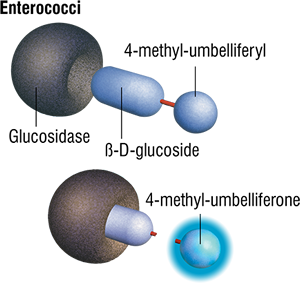
How to use
Learn how to use the Enterolert Test
Quantification
Step 1
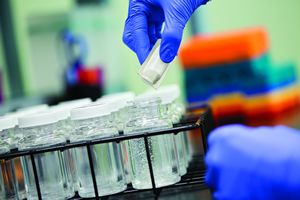 Add reagent to sample.
Add reagent to sample.
Step 2
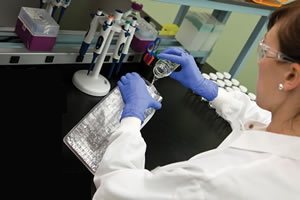 Pour into Quanti-Tray (counts from 1–200) or Quanti-Tray/2000 (counts from 1–2,419).
Pour into Quanti-Tray (counts from 1–200) or Quanti-Tray/2000 (counts from 1–2,419).
Step 3
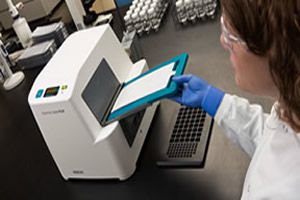 Seal using Quanti-Tray Sealer and incubate for 24 hours at 41°C ± 0.5°C.
Seal using Quanti-Tray Sealer and incubate for 24 hours at 41°C ± 0.5°C.
Step 4: Quanti-Tray
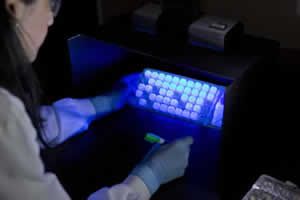 For counts from 1–200: Count fluorescent wells and refer to most probable number (MPN) table.
For counts from 1–200: Count fluorescent wells and refer to most probable number (MPN) table.
Step 4: Quanti-Tray/2000
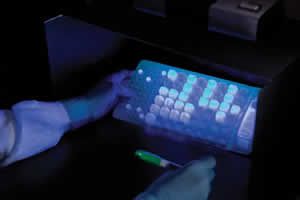 For counts from 1–2,419: Count fluorescent wells and refer to most probable number (MPN) table.
For counts from 1–2,419: Count fluorescent wells and refer to most probable number (MPN) table.
Frequently asked questions
The Enterolert test can be used as a method for enterococci detection in following types of water:
- Ambient waters—includes fresh, marine, or estuarine surface water used for recreation, propagation of fish, shellfish, or wildlife; agriculture; industry; navigation; or as source water for drinking water facilities
- Ground water
- Wastewater
Some species of enterococci that Enterolert Test detects are: faecalis, faecium, avium, gallinarum, casseliflavis, and durans.
Enterolert Test detects enterococci at 1 organism/100 mL.
The shelf life of the Enterolert Test is up to 12 months from the date of manufacture.
Store at 2–30°C away from light.
The Enterolert reagent powder should be tan in colour; it should be dry and free-flowing. Any concerns about the colour or integrity of the powder should be directed to IDEXX Technical Services.
Yes, the Enterolert Test can be run with Quanti-Tray, Quanti-Tray/2000 or any multiple-tube format.
There is no comparator for the Enterolert Test. For comparison, use a negative control when interpreting results.
Check with your local authority for proper disposal of bacteriological biohazard materials at your facility.
Resources & Tools
Tests & Accessories
Search the Water Tests & Accessories tool
Product Information
Enterolert Test (20-test pack)
Product Number: 98-21374-00
Catalogue Number: WENT020
Enterolert Test (200-test pack)
Product Number: 98-21375-00
Catalogue Number: WENT200
IDEXX-QC Enterococci Kit
Product Number: 98-29002-01
Catalogue Number: WQC-ENT
Snap pack and Quanti-Tray combination packs are also available.
Resources
IDEXX Water has reference materials and approval documents to support the many products in our water portfolio. Find the document(s) you need by selecting the link below.
Search the Reference & Regulatory Documents tool
Water Customer Support
Australia & New Zealand Head Office
IDEXX Laboratories Pty Ltd.
Unit 6, 38-46
South Street
Rydalmere, NSW 2116
AUSTRALIA
Phone (AUS): 1300 44 33 99
Phone (NZ): 0800 838 522
Fax (AU): 1800 634 409
Fax: (NZ): 0800 448 443
Water International
Brazil
Canada
China
France
Germany
Italy
Japan
Latin America
Spain
Taiwan
United Kingdom
United States
ISO Certifications
References
1. Budnick GE, Howard RT, Mayo DR. Evaluation of Enterolert for Enumeration of Enterococci in Recreational Water. Appl Environ Microbiol. 1996;62:3881–3884.